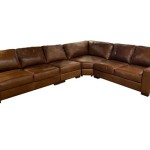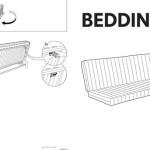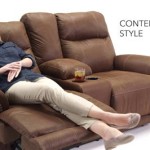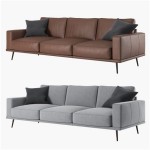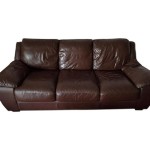Understanding Sofa One Seater Sizes: A Comprehensive Guide
The selection of appropriate furniture hinges significantly on understanding dimensions. This is especially true for sofas, which serve as central pieces in living rooms and other seating areas. Within the broader category of sofas, the one-seater, often referred to as an armchair or accent chair, holds a unique position. While seemingly straightforward, the size of a one-seater sofa is not standardized and can vary considerably depending on design, intended use, and manufacturer.
This article provides a comprehensive overview of one-seater sofa sizes, exploring the factors that influence dimensions, common size ranges, and considerations for choosing the right size for a specific space. The emphasis remains on providing objective information, enabling informed decision-making for consumers and professionals alike.
Key Factors Influencing One-Seater Sofa Dimensions
Several factors contribute to the overall dimensions of a one-seater sofa. These include the design style, the presence of armrests, the back height, and the overall intended function of the piece.
Design Style: Different design styles inherently lend themselves to varying dimensions. For instance, a modern, minimalist one-seater might prioritize a sleek, low-profile design, resulting in a smaller overall footprint compared to a traditional, overstuffed armchair with rolled arms and a high back. Mid-century modern designs often feature a blend of streamlined aesthetics and comfortable seating, typically falling within a moderate size range. Consequently, understanding the design style is crucial in anticipating the approximate size of the one-seater.
Armrests: The presence and design of armrests significantly impact the overall width of a one-seater. Armrests can range from slim, barely-there supports to substantial, padded features. Armrests that curve outwards or are particularly wide will add to the overall width, while armless designs will, naturally, minimize the width. The height of the armrests also influences the overall aesthetic and comfort of the seat, but primarily impacts the height dimension rather than width or depth.
Back Height: The height of the backrest is a critical dimension, influencing both the visual impact of the one-seater and the level of support it provides. A high-back design offers more substantial upper back and neck support, often favored in reading chairs or those intended for extended periods of sitting. Low-back designs tend to create a more open and airy feel in a room but offer less postural support. The choice of back height is often a matter of personal preference and the intended use of the chair.
Intended Function: The specific purpose of the one-seater also influences its dimensions. A one-seater intended as a reading chair might prioritize a deep seat and high back, encouraging relaxation. A one-seater designed for a formal living room might prioritize a more upright posture and a smaller overall footprint, emphasizing aesthetics over prolonged comfort. Similarly, a club chair, designed for conversation and social interaction, might feature lower armrests and a slightly reclined back.
Common Size Ranges for One-Seater Sofas
While specific dimensions vary across manufacturers and designs, some general size ranges are observed for one-seater sofas. These ranges provide a helpful benchmark for understanding typical dimensions and comparing different models.
Width: The width of a one-seater sofa typically falls between 28 inches and 45 inches. Narrower designs, closer to 28 inches, are suitable for smaller spaces or for creating a more minimalist aesthetic. Wider designs, approaching 45 inches, offer more generous seating and can accommodate larger individuals more comfortably. The width is typically measured from the outermost points of the armrests, if present. A wider seat can also incorporate cushions that allow for greater movement and positioning within the seating area and promote better posture.
Depth: The depth, or the distance from the front edge of the seat to the back of the chair, typically ranges from 30 inches to 40 inches. A deeper seat provides more legroom when seated, allowing for a more relaxed posture. Shallower seats are often preferred for more formal settings, encouraging a more upright posture. The depth should also be considered in relation to the overall room size, ensuring sufficient space for comfortable movement around the furniture. A deeper seat may occupy a larger area of a room, affecting the available space.
Height: The height of a one-seater sofa, measured from the floor to the top of the backrest, typically ranges from 30 inches to 45 inches. Lower back heights, around 30 inches, create a more modern and streamlined look. Higher back heights, approaching 45 inches, offer more support for the back and neck. The seat height, measured from the floor to the top of the seat cushion, is another important dimension, typically falling between 16 inches and 20 inches. The seat height influences ease of sitting and standing and should be considered in relation to the user's height and physical capabilities. Considerations for height may include the ceiling height of the room, especially in rooms with lower ceilings.
It is important to note that these are general ranges, and specific designs may fall outside these parameters. Always refer to the manufacturer's specifications for the most accurate dimensions.
Considerations for Choosing the Right Size One-Seater
Selecting the appropriate size one-seater involves carefully considering the space available, the intended use of the chair, and the personal preferences of the user. A thoughtful approach ensures that the chosen piece complements the room and provides optimal comfort and functionality.
Space Availability: The available space is a primary factor in determining the appropriate size of a one-seater. Before purchasing, measure the intended location and consider the surrounding furniture and traffic flow. Ensure that the one-seater does not obstruct pathways or overwhelm the space. Consider the proximity of other furniture pieces, such as coffee tables or side tables, to ensure ease of use and a balanced aesthetic. The room's overall dimensions, including width, length, and height, will influence the perception of space, along with the amount of light and the color scheme used.
Intended Use: The intended use of the one-seater will influence the desired dimensions. A reading chair should offer a deep seat and high back for optimal comfort during extended periods of sitting. A one-seater intended for a formal living room might prioritize aesthetics over comfort, allowing for a smaller footprint. Consider the activities that will primarily take place in the chair, such as reading, watching television, or conversing with others, to determine the appropriate level of support and comfort. The angle of the back, the firmness of the cushion, and the type of material will all affect the comfort level of the chair.
Personal Preferences: Personal preferences play a significant role in selecting the right size one-seater. Consider the user's height, weight, and preferred seating position. Taller individuals may prefer a higher seat height and a deeper seat depth, while shorter individuals may find a lower seat height more comfortable. The desired level of back support is also a personal preference. Some individuals prefer a high-back design that provides ample support for the upper back and neck, while others prefer a lower-back design that allows for more freedom of movement. Preferences for seat cushion firmness also vary, from plush, soft cushions to firmer, more supportive cushions. The individual's personal taste in terms of style, color, and material are also to be considered. The materials should complement the colors and styles of the other furniture.
Accessibility: Ensure that the height and depth of the one-seater are appropriate for users with mobility limitations. A seat that is too low or too deep can be difficult to get in and out of, potentially causing discomfort or even increasing the risk of falls. One-seaters with armrests can provide support for getting in and out of the chair. Consider the placement of the chair in relation to doorways and passageways to ensure easy access. For individuals with limited mobility, ensure that there is adequate space to maneuver around the chair.
By carefully considering space availability, intended use, and personal preferences, individuals can select a one-seater sofa that is both comfortable and visually appealing, enhancing the functionality and aesthetics of the room. Ensuring accurate measurement and considering various factors contributing to the perfect one-seat sofa will ultimately ensure that the selected piece of furniture is the ideal addition to the space.

Boston Cream Brown Colour Single Seater Sofa

Romane One Seater Sofa Wooden Fabuliv

Buy Erica Light Brown Colour Single Seater Sofa At Best In Pune

Small Single Seater Sofa Modern Office Sofas Bossescabin

Teak Wood One Seater Sofa Teaklab

42 Inch Single Sofa 1 Person Velvet Couch With On Tufted Back Soft Seat Thick Removable Cushion Mid Century Rubber Wood Legs For Small Space Com

Beige Teddy Fabric Sofa Modern Accent Armchair Upholstered Single Chair Reading Lounge With One Pillow

Axis 1 Seater Fabric Sofa

Teak Wood One Seater Sofa Teaklab

Buy Ayilin Single Seater The Home Uae

